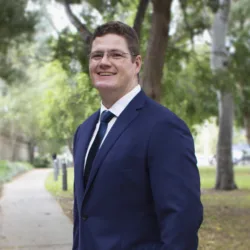Mass electrification – it’s more complex than it sounds
“Electrify everything!” is the catchphrase of 2023 for built environment sustainability – however, according to the data from the Australian Energy Market Operator (AEMO), we face a major hurdle. At current levels of asset performance and infrastructure systems, we do not have sufficient capacity in our national electricity market to meet the probable demand if all our buildings, industrial processes and transport rapidly transition to all-electric operation.
In NSW and Victoria, the AEMO data released in 2023 which shows that an approximate 500 megawatts of additional firm capacity needs to be added per State in 2026-27 to meet the Interim Reliability Measure. Given the long lead times for new generation capacity, it looks like we either need to start building new solar and wind resources now, or there is an urgent need to find a way to save roughly 1,000 MW of electricity in each State, or, hope that other states will have capacity to spare.
Keep in mind, the AEMO data is only looking at the national electricity grid supply – not the reticulated gas supply that is used for on-site combustion to power boilers, hot water, cooking, space heating and so forth.
This means that if we start switching gas-fired plant and equipment rapidly and at scale to all-electric without doing anything additional to reduce the overall electricity demand at the same time, Houston, we have a problem.
Energy-efficiency pays off at scale
The good news is the AEMO Annual Consumption Overview data shows that energy-efficiency measures (including demand-reduction and behaviour-based strategies), in conjunction with the continued growth in rooftop PV installation, are already filling the gap created as coal- and gas-fired plant is retired from the grid.
Source: AEMO AEMO | Annual consumption overview
However, another analysis by the Australian Energy Regulator shows the rate of growth in rooftop PV is not sufficient to keep pace with population-driven demand growth, nor is it enough to fill the gap that will be left as more coal and gas is retired at the generator scale, and as gas is phased out at the building or precinct scale. Plus, we need to be factoring in the increased phase-out of internal combustion engine vehicles across passenger vehicles, public transport and freight.
Every electric vehicle means reduced emissions, but it also means increased mains electricity demand unless EV infrastructure incorporates solar PV and battery storage to offset demand – solar charging carparks for example, or logistics facilities maximising the generation capacity of their rooftops.
If we put all these pieces together, it becomes clear that the energy transition requires a holistic, landscape-based view of the supporting ecology and human behaviours.
The “ecology” in this case is the full suite of interactions and assets that comprise the urban fabric – buildings, infrastructure, freight, transport and other. Each element has an energy appetite, and each is also affected by dynamic forces including population growth, technology change, policy shifts, and financial pressures.
How we plan for that appetite to shift from gorging on gas to foraging exclusively on renewable electricity means looking at the whole system and addressing each factor from a science-first lens, not a profit-foremost one.
If we get the science right, the money will follow – just ask Tesla.
The science involved includes the “hard” sciences of building physics, appliance and equipment engineering design, smart building technologies, IT and IoT-enabled demand management and demand switching platforms and so forth. It also includes the “soft” sciences – psychology, natural resource economics, sociology and policy analysis.
In urban energy terms, this means looking at how we design and operate our buildings and transport infrastructure; how we design, manage, and finance energy infrastructure; and, how we adapt social behaviour to reduce the amount of mechanical/electrical/chemical energy required to support a viable standard of living aligned with the UN Sustainable Development Goals (SDGs).
There’s a lot of ground to cover
Ultimately, mass electrification is not the silver bullet for decarbonisation. True decarbonisation means minimising the demand for new embodied carbon in the form of materials, optimising the efficiency with which energy is used across buildings, industrial processes and transport, replacing fossil-fuel combustion with renewables at the generator and at local scale, and then leveraging high-quality verified carbon offsets for any emissions that could not be engineered out. This is a science-based pathway and one that aligns with important allied principles including biodiversity protection, climate equity, and the SDGs.
Just as a solid ESG (environment, social and governance) strategy at the organisational scale means considering what will be done, how it will be done and by whom it will be done (and how the do-ing is measured and reported), we need an ESG strategy approach for the whole economy and community to support and enable mass electrification.
It’s a huge topic, and one we plan to discuss over a series of articles that examine the various moving parts of the electrification juggernaut including:
- The electrification supply chain: labour, plant, and materials
- Financial barriers to electrification and incentive solutions
- Demand side smarts to support grid viability and generator capacity
- Getting the right people onboard – stakeholders and engagement
- The power of planning – will the statutory system be a help or a hindrance?
- Avoiding the cliff edge – a sensible program through to 2036
- Acting now – the advantages for those making a start

This thought leadership series is a collaboration with Nicholas Dillon, Project Director, Tactical Group.












